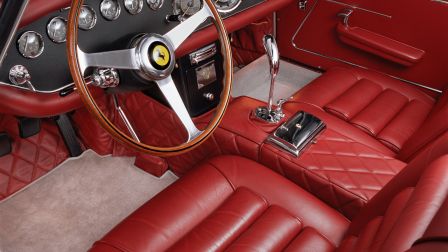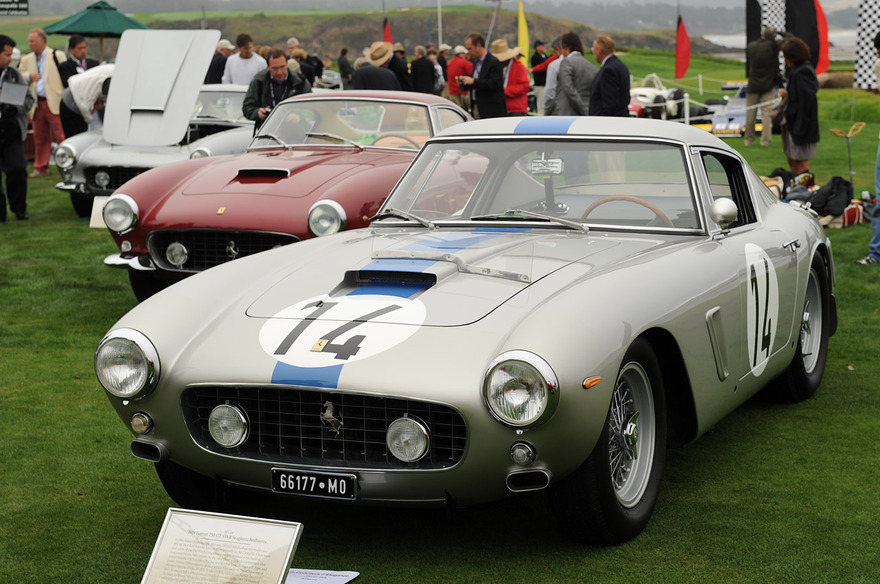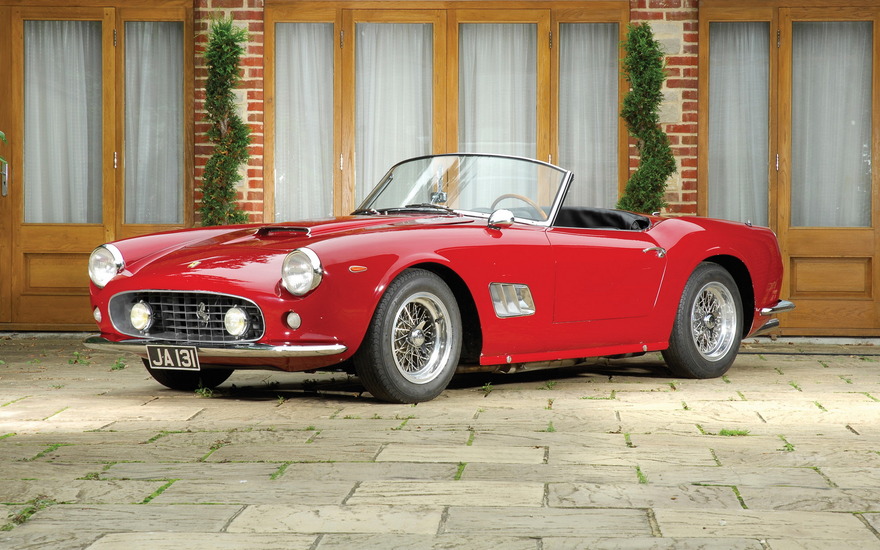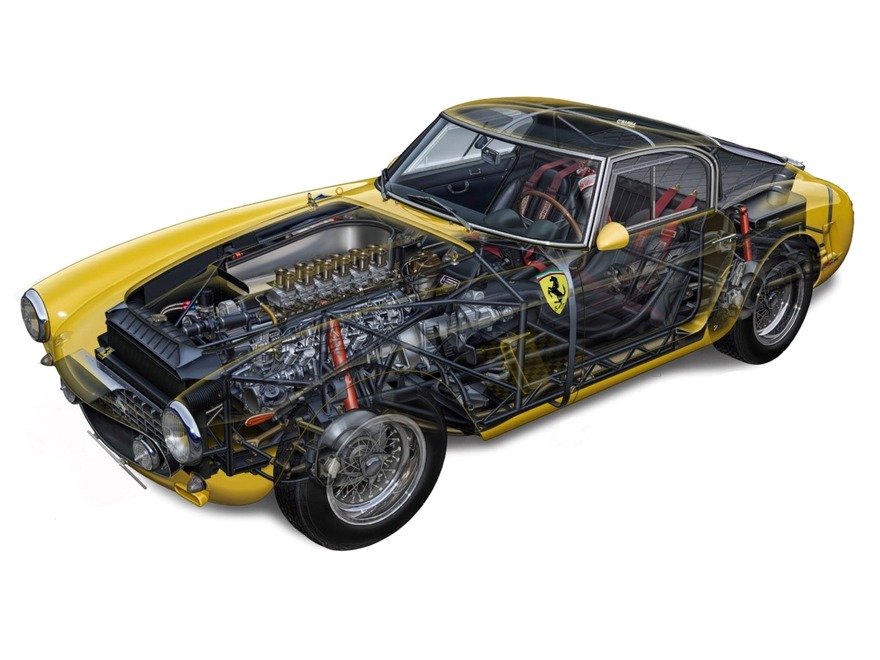Post-war Italy. Crash of fascism, territorial delimitation, Victor Emmanuel abdicated his throne to his son Umberto II who was reigning for 34 days only. Enthusiastic Italians were creating new history. New records were set in the new world.
Ferrari SWB was born on the base of a rather specific model 250 GT with the unofficial Tour de France name. Enzo Ferrari together with his team of engineers and designer Sergio Scaglietti were creating history of the best cars meant for world supremacy. Good leadership skills and restive character of the Italian racing test driver affected the company’s success. Within the 5-year period after the end of World War II Ferrari produced several models, all of which became real supercars and part of collector’s heritage. Each vehicle was hand-built and was either unique or had limited edition. Among these cars with 250 index driving the streets of Italy one could proudly note another queen of Enzo Ferrari. Luxurious and elegant, expensive and exclusive 250 GT SWB model with its distinctively short wheelbase appeared after a shocking crash during the 1955 24 Hours of Le Mans race. It took the lives of 80 people and a lot of car manufacturing companies had to start adding more features of stock cars to their race vehicles.
Pininfarina design studio created 7 variants of Tour de France with a more rounded front part. In 1959 an SWB version with 2400-mm wheelbase was presented at the Paris Motor Show. It was a custom-built vehicle. The clients were seeking for maximum power. A great V12 featured two overhead camshafts and symmetrical valves and its 3-litre engine produced 280 hp. The motor designed by a genius engineer Gioacchino Colombo is truly excellent. It reaches its peak output at 7000 rpm which allows accelerating the car up to 230 km/h and its fuel consumption is only 18.2 litres per 100 km.
Legends were composed about this pulsing heart. It was beating in the stars together with Testa Rossa, 250 GTO, 275 GTB, and of course, SWB. They made changes in the new version of the engine, which was created after Tour de France, allowing fast spark plug replacement during the races. With this purpose the engineers moved them from the inside of the vee of the block to its outside. This led to faster fuel combustion. The quality of the mixture was provided by a perfectly precise trio consisting of Weber carburettors and double throttle plates. The engine of SWB queen manifested reliability which is important both during the races and on public roads.
The Italian culture was going through its rebirth in the voice of Ferrari 250 GT SWB. The words “fascinating” and “exciting” are too simple in describing the sound of this engine. Nothing else could excite you that much and make you step harder on the acceleration pedal than this roar of the master of roads going straight into your heart.
The car was creating a stir from the very first day of its production. It is magnificent from the bonnet to the boot lid. Aggression is felt in its forceful wings and soft curves just hide power. Pininfarina recognizes this car as their most successful piece of work. You can hardly find anything better in more than 50 years of history of the famous Italian design studio. There is nothing extra either outside or inside of the car as it was built for the races. And numerous victories at competitions give the best evaluation of the work done.

Taking into consideration its racing potential and elegant exterior one could think that this car was sent from heaven to the playboys of our world. “When in 1959 there came a very fast and expensive 250 GT SWB, the outdated Jaguar XK150 started to look like a horse-drawn wagon”, Russ Smith wrote in his article “Aston Martin DB4GT vs. Ferrari 250GT SWB”.
This Ferrari has always been and will remain a magnificent car and people are ready to pay a whole fortune for it. Among 165 of SWB’s with steel body there are heroes and unacknowledged old-timers. Their current prices lie in the range from £1.5 million British Pounds (an object for restoration) and up to £3.5 million GBP (racing car with history). And one of 19 SEFAC V12 1961 race vehicles has now the price of £5 million GBP.
During all years of its production Ferrari and Pininfarina were upgrading the car. By 1961–1962 SWB had a large glass area and its body became “straighter”. The history of a short-wheelbase Ferrari had more than an outstanding ending. In racing competitions of those years one of the last 250 GT SWB models driven by Stirling Moss scored two victories at Goodwood Tourist Trophy over its competitor Aston Martin DB4GT. But the most splendid queen created by Enzo Ferrari was still to come. The 250 series had not beaten its record yet.
Photos tapiture.com, hqwallpapers4free.com, russian.autonp.com, ru.autowp.ru












